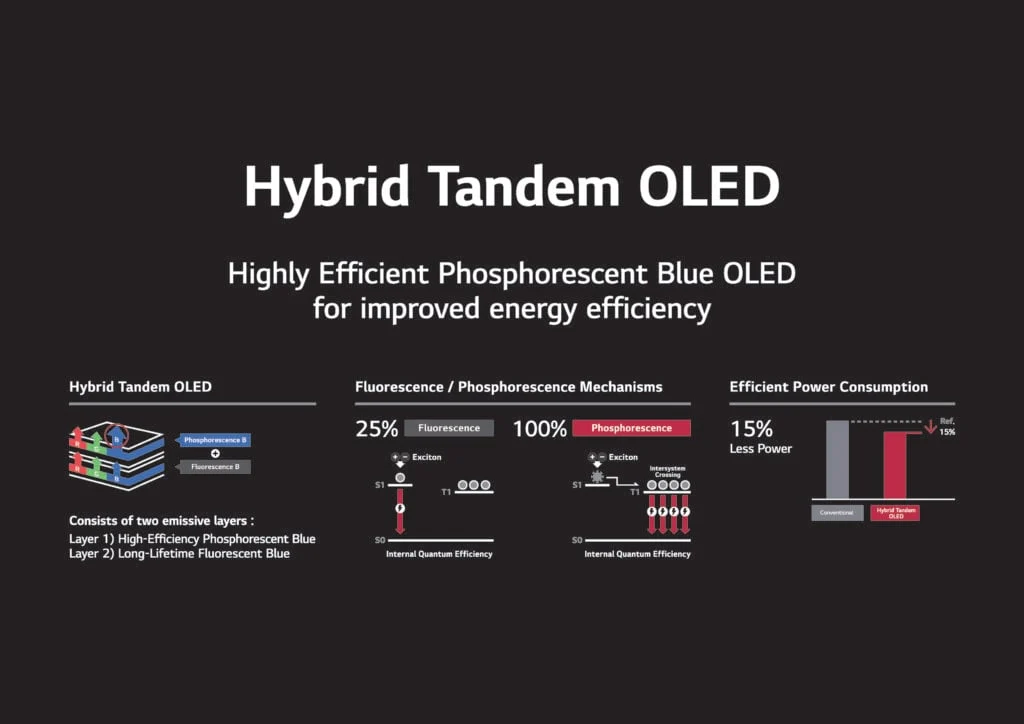Key Takeaways
1. LG Display is the first company to mass-produce blue phosphorescent OLED panels, a key element in achieving energy-efficient displays.
2. The breakthrough was made possible through collaboration with Universal Display Corporation (UDC) and will debut at SID Display Week 2025.
3. Blue phosphorescent materials address the inefficiency of current blue fluorescence, which only achieves 25% light emission efficiency.
4. LG’s innovative “dual-stack tandem” design combines blue fluorescence with blue phosphorescence, reducing power consumption by approximately 15%.
5. This technology enables brighter displays, longer battery life, and potential applications in smartphones, tablets, wearables, and AR/VR devices.
LG Display has recently achieved a significant milestone that many in the display sector have long sought after. They are now the first to mass-produce blue phosphorescent OLED panels. This is crucial because blue has often been seen as the missing element in what is referred to as the “dream OLED,” a display that utilizes energy-efficient phosphorescence for red, green, and blue colors.
LG Display’s Breakthrough in Power Efficiency
This innovation comes after eight months of collaboration with Universal Display Corporation (UDC), and the new panel is scheduled to make its debut at SID Display Week 2025 in San Jose. Interestingly, many people thought Samsung would be the first to succeed in creating blue phosphorescence and integrate it into future foldable devices like the Galaxy Z Fold 7 or Flip 7, but LG has taken the lead.
The Importance of This Development
So, why is this important? While red and green phosphorescent materials have been utilized for years in current OLED displays due to their high efficiency and low power consumption, blue has remained a tough nut to crack. Blue light, having a shorter wavelength and higher energy, poses significant challenges. The existing OLED panels have depended on blue fluorescence, which, while more stable, is quite inefficient, reaching only 25% light emission efficiency at best.
Innovative Design Approach
LG’s new method employs a hybrid “dual-stack tandem” structure. The lower layer continues to use blue fluorescence for added durability, but it is now combined with a blue phosphorescent layer on top. This setup reduces power consumption by approximately 15% while maintaining stability and lifespan. In an age dominated by power-hungry smartphones, tablets, and AI devices, this achievement is not just remarkable; it’s crucial.
This advancement heavily relies on UDC’s PHOLED technology, which utilizes organometallic compounds that include heavy metals like iridium. These materials enable the panel to harness both singlet and triplet excitons, allowing it to extract significantly more light from the same energy input with nearly 100% efficiency.
Beyond Just Energy Savings
The advantages extend beyond merely lower power consumption. The new panels might facilitate brighter displays, longer-lasting batteries, and potentially slimmer devices. LG indicates that this technology is primarily targeted at small and medium displays, currently focusing on smartphones and tablets. However, there is evident potential for use in wearables, foldable devices, AI PCs, and even AR or VR headsets.
The quest for blue phosphorescent OLED has been one of the toughest challenges in display technology. With LG’s recent breakthrough, the dream OLED is no longer just a theoretical idea—it is becoming a reality and will be available soon.
Source:
Link



Leave a Reply